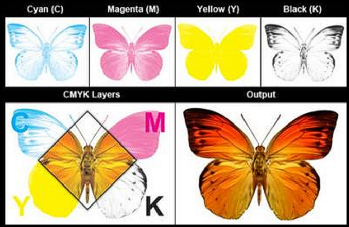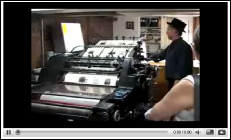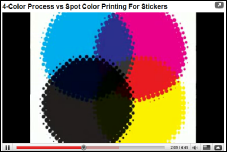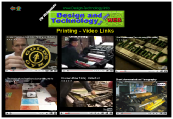























colour reproduction in
What is the difference between
This image shows how the four printing colours ( three secondary primaries + Black ) when recombined can now make the whole spectrum of colours



Traditional televisions used a cathode ray tube that used included three different ‘guns’ that controlled one colour each of the three additive colour primaries - Red, Green and Blue. The system worked well for many years but has now been superceded by plasma, LCD and LED systems - all of which work on the additive principle and depend on the whole screen being covered with small pixels that can
A quick check of the screen of an LED or LCD television shows the same structure. Small clusters of red, green and blue that can collectively produce the millions of colours seen on the television pictures.
Remember the Subtractive primary colours – Yellow, Magenta and Cyan and are
the basis of 4 colour printing . ( YMCK )
It is possible to print using a number of colours
that do not interact and this process is called -
Colour ’ printing. It is used on stickers and
simple posters and packaging. It has the major
advantage of being simpler and cheaper and
can be considered in many print applications.
Branded products may use both together so
that a very precise ‘house/brand’ colour can
be specified.
the basis of 4 colour printing . ( YMCK )
It is possible to print using a number of colours
that do not interact and this process is called -
simple posters and packaging. It has the major
advantage of being simpler and cheaper and
can be considered in many print applications.
Branded products may use both together so
that a very precise ‘house/brand’ colour can
be specified.
If you have read the previous page you should easily be able to explain the difference between the system used for printing on paper, fabric, etc where the image is seen as a result of reflected light - and the image that appears on a television which acts as a ‘light source’ itself. The reflected light system was called the ‘Subtractive’ system sine it worked on the object absorbing (subtracting) colours from the light falling onto the object whilst a television works on the additive system. What were he three ‘additive primary’ colours that were mentioned on the previous page ?
Reproducing colours on televisions
turned on and off according to the colour that is required to be shown at that point. The pixels are grouped together in threes so that a Red, a Green and a Blue component can be turned on or off. Looking back at the previous page you should be able to say what two colours of these three would be needed to make Yellow, Cyan or Magenta - the three ‘subtractive’ primaries on which the colour printing system worked. If you are unsure check back now.
4-Colour Printing & Television
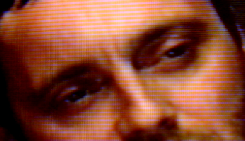
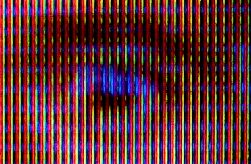
Taking a magnifying glass and looking closely at the way the TV screen produces its picture shows the grid onto which the coloured ‘guns’ project their electron beam. The three additive colour primaries can easily be seen as can the way that pairings of those ‘additives’ produces additional colours.
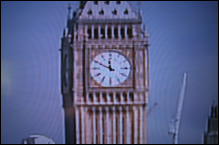
LCD & LED Tv’s
Photographing the screen with a digital camera at a very close viewing distance will show the pixels very easily and makes understanding how it works much easier.
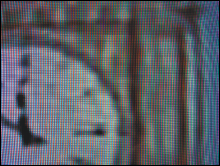
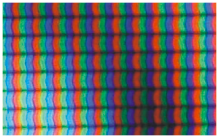
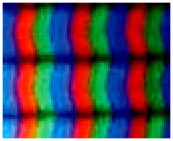
Why donate ?


